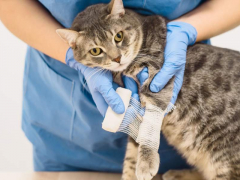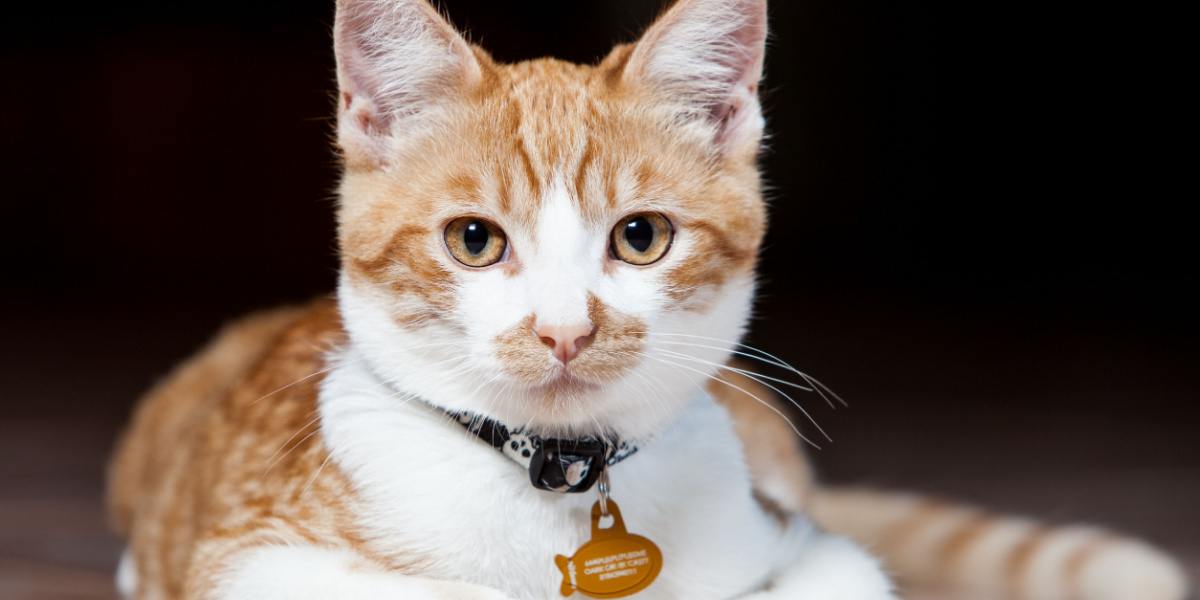
Pet collars are sometimes seen as being a “dog thing,” but collars can be useful for domestic cats, too.
There is a range of pros and cons for whether we should fit our pet cats out with a collar. They are useful for identification and contact information, they can increase visibility, and collars with a bell can even reduce hunting behavior, but collars have also been linked to serious injuries in cats.
Read on to find out more about why you might want a collar for your cat (or not!), how to keep them safe, and tips to get them used to wearing one.
Reasons To Use a Collar
Cats may wear collars for various reasons, but some of the most common include:
1. Identification Tag
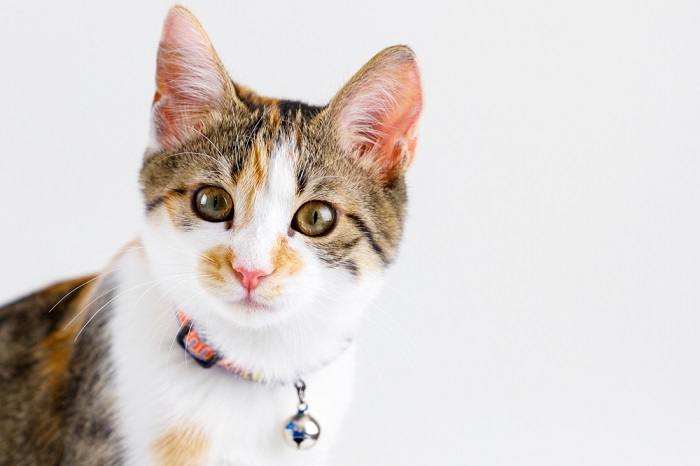
A collar with an ID tag is a clear sign to others that a cat outdoors has an owner and a home.
A common reason to place a collar around a cat’s neck is for visible identification. Collars make a definite and obvious statement that the cat is owned and cared for rather than a stray, and an ID tag can carry the owner’s details.
A microchip is a more permanent form of identification, but many owners like the immediate visibility of an ID collar. This might be more applicable to outdoor cats, but indoor-only cats should also be able to be identified, as escapes can happen.
Ideally, cats should have both a chip and a collar for identification purposes. If your pet’s collar comes off, they can still be reunited with their owners using the cat’s microchip if turned in to an animal shelter or vet.
Also Read: The 7 Best Cat Collars
2. Hunting Deterrents
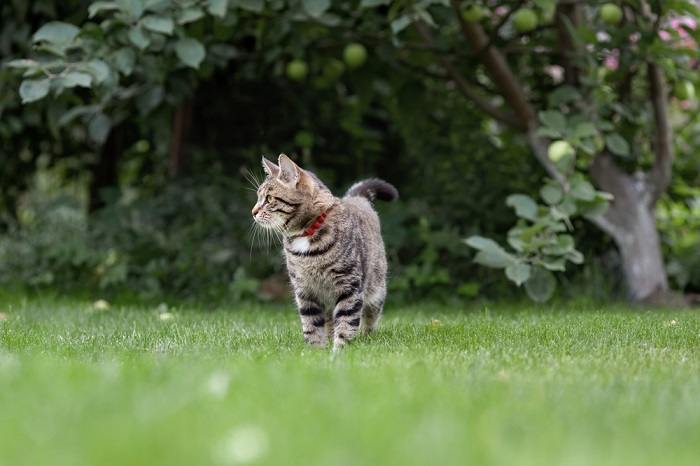
If you want to prevent your cat from hunting, a collar with a bell warns wildlife that a prey animal is nearby.
If your cat is a skilled predator, constantly bringing you “gifts” of rodents or small birds, then a collar and bell might be useful. Studies have shown that bell collars reduce cat predation on local wildlife, in some cases almost halving the number of birds and small mammals such as mice killed by domestic cats.
Also Read: How Do Cats Hunt?
3. Visibility
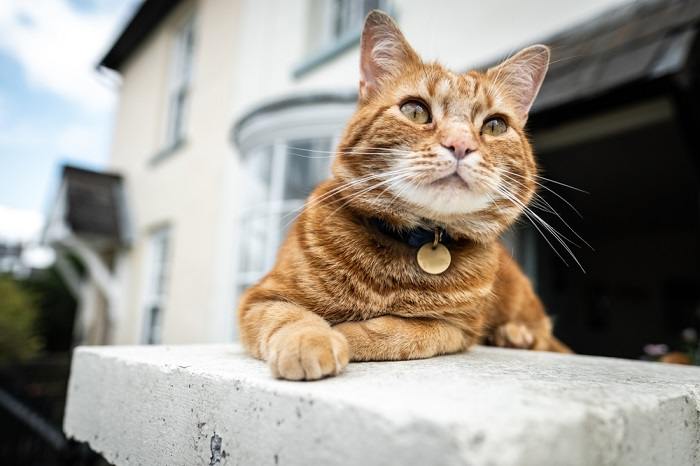
A reflective collar and tag can alert drivers to a cat in the road.
There are various risks to cats being outdoors, such as road traffic accidents. Cats are crepuscular, which means they are most active at dawn and dusk, which is also when ambient light levels are low. Wearing a collar with reflective material can increase visibility in the dark, which might help keep them safer.
Also Read: What To Do If You Accidentally Step On Your Cat
4. Flea Control
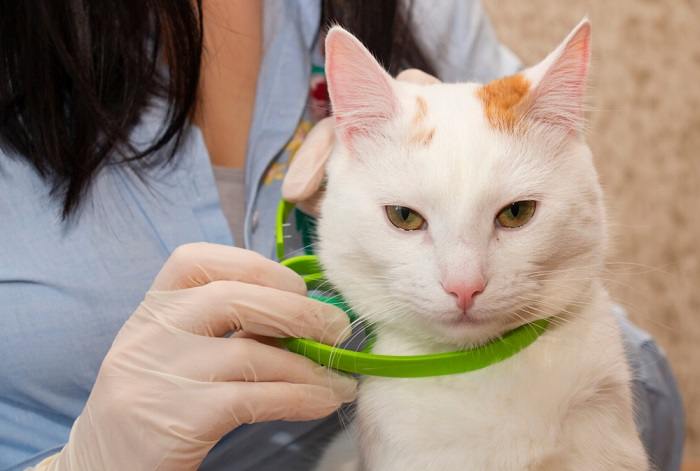
Flea collars are helpful for some cats, but you usually can’t attach an ID tag to a flea collar.
Flea collars are popular with some pet owners as a way to treat fleas without having to apply medication to their cat. However, flea collars range in both safety and efficacy.
Many flea collars contain toxic chemicals such as permethrin or organophosphates, which have safety concerns, and others use more natural ingredients but don’t actually treat fleas effectively. In most cases, there are better methods of flea control available for cats.
Also Read: The 11 Best Flea Treatments for Cats
5. Decoration
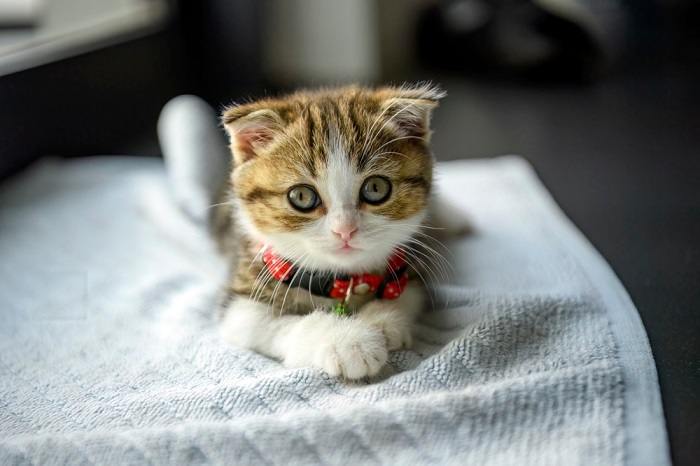
You might wish to buy an adorable collar for your cat, but always consider safety and function over aesthetics.
Pet shops, supermarkets, and online stores stock a vast array of cat collars, some intensely decorated and very aesthetically appealing.
However, a collar should never be placed on a cat for purely decorative purposes—if it serves no function for animal welfare, it should not be used. Your cat is beautiful enough already!
Ornaments on collars such as gems and studs can also cause irritation if they rub on the skin, and can be accidentally eaten if they come off the collar.
Also Read: Is Burning Incense Bad For Cats?
Do Collars Cause Injuries?
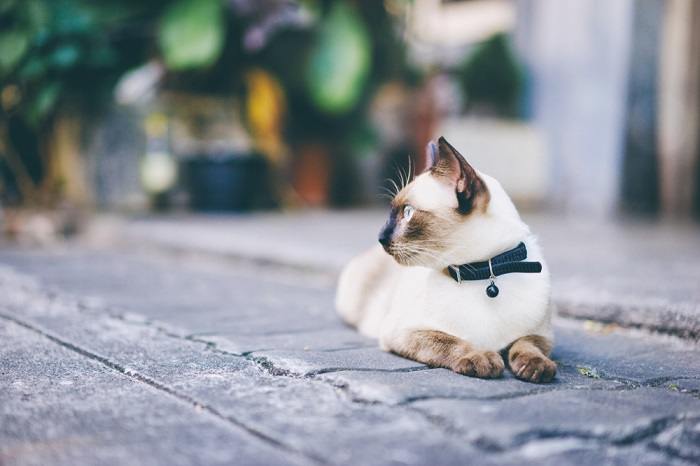
Traditional collars without safety features can be dangerous for cats.
The main argument against cats wearing collars is the possibility of harm or injury.
Some cats will suffer from hair loss around the neck where the collar lies. This is unlikely to become a problem unless the collar rubs the skin and causes inflammation or abrasion.
Collars can pose more serious threats to cat health, although uncommonly. There is the risk of strangulation if the collar becomes caught on something and doesn’t break or slip off. Cats can also get a leg or jaw stuck around the collar, causing wounds and potential nerve damage.
This is particularly common with collars with elastic inserts, which have enough stretch to get a limb or jaw around them due to the elasticity, but don’t break when caught.
Bells and discs hanging from collars can get caught on objects, or pose a choking hazard if ingested.
It is worth noting that collar injuries are fairly rare. A study by the American Veterinary Medical Association followed 538 cats for six months, and 18 (3.3%) reported a problem with a forelimb or mouth caught in a collar.
Also Read: Seresto Collar For Cats: Overview, Dosage & Side Effects
Other Disadvantages of Collars
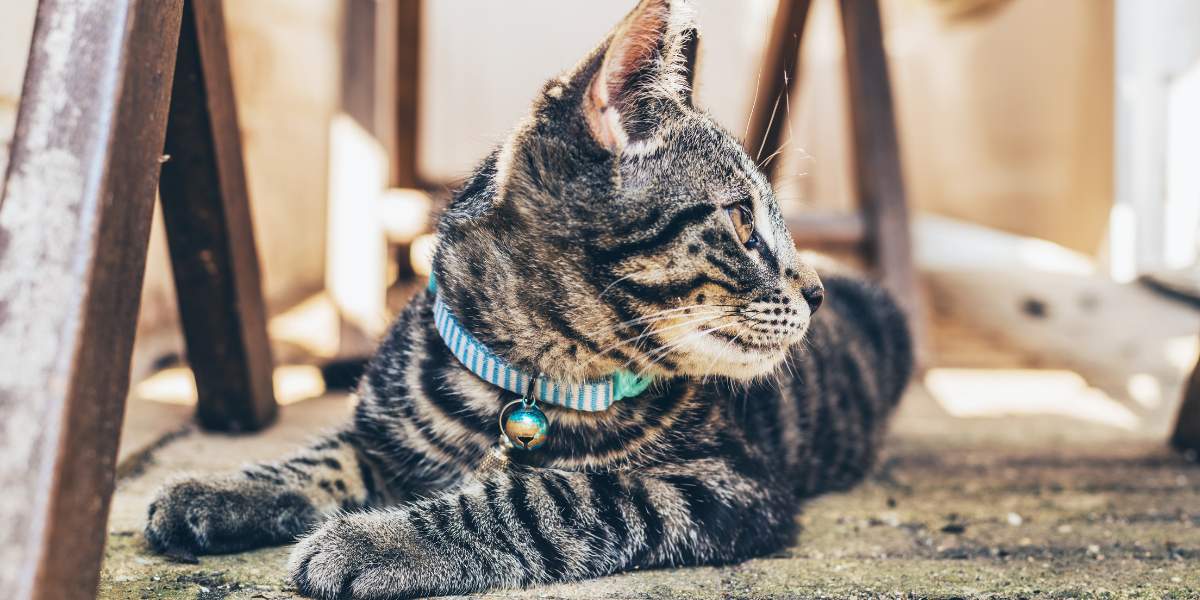
Introducing a collar when your kitten is young helps them learn to wear it without issue.
The main reason that some owners decide against cat collars is the risk of injury, but there are some other disadvantages.
A collar cannot be completely relied upon for contact purposes, as they can get broken and lost. A microchip is a more durable method of identification if you are worried about your cat escaping or getting lost.
Some cats will simply not tolerate a collar, even with a gradual introduction and a lot of positive reinforcement. If your cat reacts aggressively, freezes, or frantically tries to remove their collar, even after multiple, positive, and gentle attempts, it might be best to abandon the project.
Also Read: How Much Does it Cost to Own a Cat in 2024?
Keeping Your Cat Safe
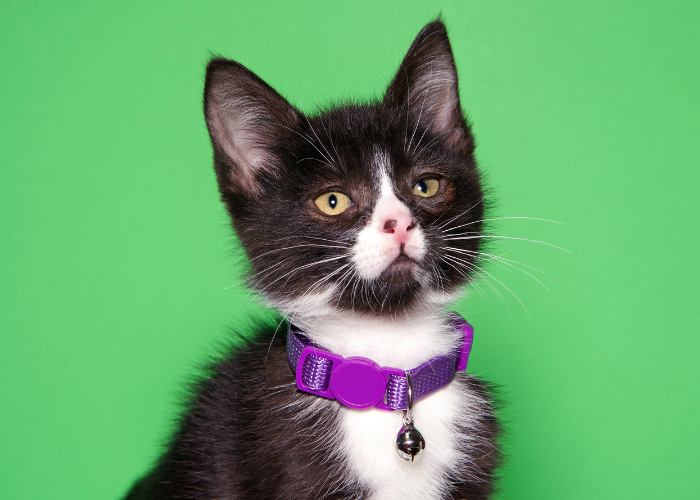
Choose collars with safety clasps that are designed to break open if they collar becomes hooked on something.
If you chose to use a collar, there are some top tips to help keep your kitty safe and sound.
Always choose a safety collar with a buckle that snaps open if your cat’s collar gets caught on something. Also called a quick-release collar, or breakaway collar, these give your cat a better chance of escaping injury if they are unlucky enough to get their collar snagged on something. Make sure the collar is of good quality, and that the snap fastening releases easily.
The collar needs to be fitted properly. Collars should lie snugly on the cat’s neck, and you should only be able to fit one or two fingers between the collar and your cat’s skin. Some owners worry that a tight collar will affect their cat’s comfort, but a loose collar is a safety concern, and there is no evidence that wearing a collar loosely is more comfortable for your cat.
Any tags, discs, or bells should be lightweight and securely fastened to the collar. Check your cat’s collar regularly for damage, fit, loose attachments, or insecure fastenings. Check the fit of a kitten’s collar regularly as they will rapidly outgrow collars, leading to discomfort and neck wounds if not replaced with the correct size.
It might take some time and patience for your cat to get used to a collar, especially an adult cat that hasn’t worn one before. Start by placing the collar on for short periods of time, and then remove it, gradually building up the time that your cat wears it. Lots of positive reinforcement such as praise and treats will help.
Also Read: How To Kitten-Proof Your Home: 6 Essential Tips
Alternatives to Collars
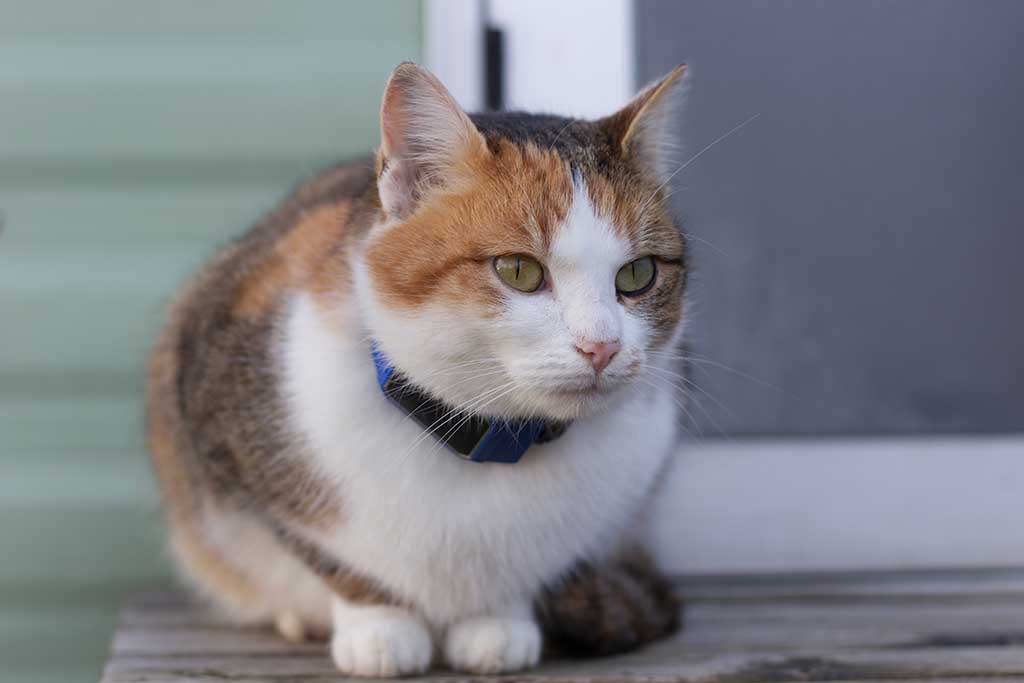
Many owners choose to use both a microchip and a collar to identify their cat.
If you don’t wish for your cat to wear a collar, they should still be identifiable—even indoor cats. Your vet can place a microchip under the skin between your cat’s shoulder blades. The chip is not visible from the outside but it can be picked up using a microchip scanner, and your details found via an online portal. Your cat’s microchip should last for their whole life without problem, and most veterinarians and animal shelters have scanners.
If your cat is a hunter, but won’t tolerate a bell collar, a study has shown that a diet with a high meat content and plenty of active object play can reduce hunting behavior. The Royal Society for the Protection of Birds (RSPB) also advises measures, including keeping cats indoors at certain times when birds are more vulnerable.
Also Read: Can You Discipline A Cat?
Cats and Collars: Final Thoughts
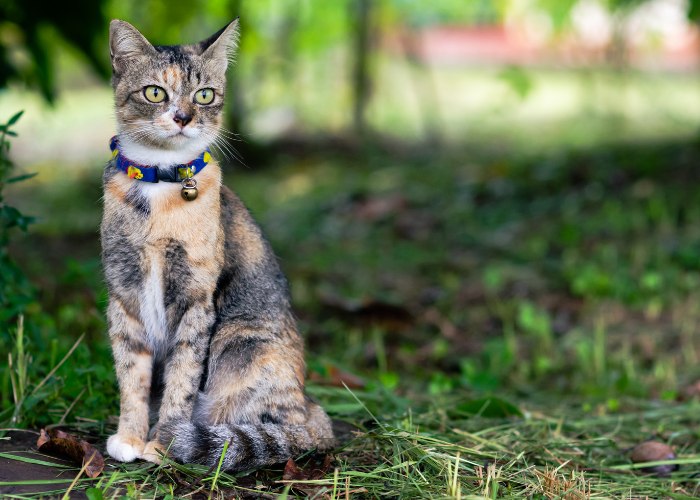
Collars serve many valuable functions for cats, adding a layer of safety for indoor and outdoor cats.
Many cat owners use collars for their pets. Collars can serve multiple functions, including identification, increased visibility, and restricting hunting. They can be used to treat fleas, but there are plenty of other flea treatment options available. Microchipping is a useful alternative form of identification, and chips can also be used in conjunction with collars. Although collars can cause injuries in cats, this is not very common. Always make sure your cat’s collar has a quick-release feature, is comfortable and good quality, and fitted correctly.
Also Read: The 7 Best Cat ID Tags
